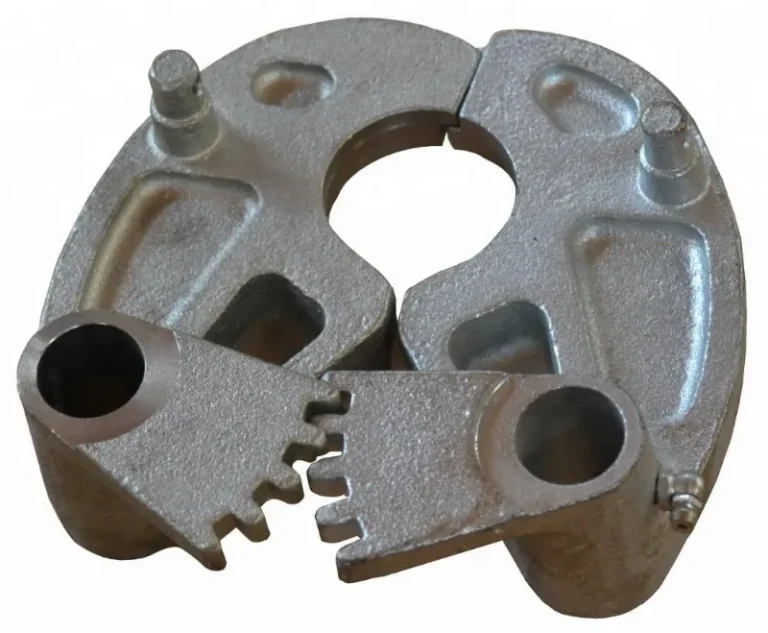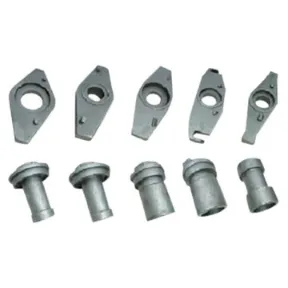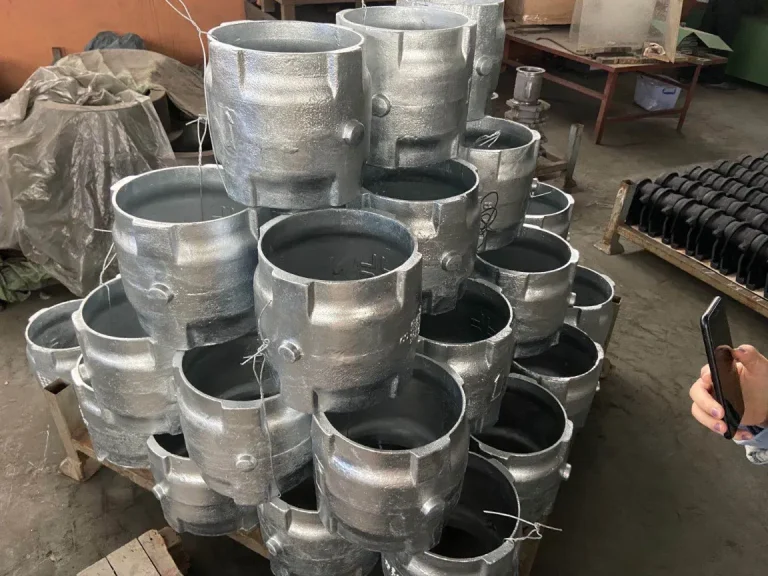Understanding the Role of the Connecting Rod
What is a Connecting Rod?
Connecting rods are crucial components in internal combustion engines and other mechanical systems where reciprocating motion is required. They play a vital role in transferring motion and force from the piston to the crankshaft, converting linear motion into rotational motion.

The function of the connecting rod
The connecting rod,is one of the most tortured components in the engine. It’s compressed for half the combustion cycle and stretched during the other half. Taking a chance on replacing such an essential element of the engine with an inferior part is never in the best interest of a powersports enthusiast, so often the choice is to return to the dealership for an OEM part.
However, there is an affordable alternative matching OEM quality. A connecting rod connects a piston to a crankshaft with help two split and bolted halves. You need to add enough prelude before attaching the piston and connecting rod to the crankshaft. If you wouldn`t, do it, the oil pump will not have time to send fresh oil to places it`s need.
When connecting rod connects to the crankpin, and the connecting-rod cap is slid into place, we need to install connecting rod cap bolts. Once the bolts are in place, them have to be tightened with the torque as specified by the manufacturer.
The Application of Connecting rod
Complementary to Connecting rods complete crankshaft assemblies, connecting rods offers a complete line of replacement connecting-rod kits for dirt bikes, ATVs, personal watercraft and street bikes—all sourced from the same factories in Japan that supply the leading manufacturers. Connecting rod kits help fill those gaps for those who want to refresh their bottom with OE-quality parts without spending OEM parts money.
The advantages of connecting rod
Connecting rods refers to an automotive-style rod bearing that is simply two bearing shell halves that are affixed in the big-end of the rod. The crank pin fits into these bearing shells within OEM tolerances and rides on a film of oil between the pin and the bearing.
Connecting rods bearings utilize German multi-metal technology with Tin plating, which, in combination with the plain bearing design, make them better equipped to handle higher engine loads and better resist bearing and pin wear.
Functions of the Connecting Rod in Engine Operation
The main job of a connecting rod is to pass force from the piston to the crankshaft. This helps turn energy from burning fuel into mechanical power. Also, it keeps the piston and crankshaft lined up properly. This makes the engine run smoothly and perform well.
Qingdao Baoqi Intelligent Co., Ltd. has specialized in producing high-quality forging and casting parts certified under ISO-9001 standards. They produce high-quality connecting rods
Tools and Equipment Needed for Inspecting and Replacing Connecting Rods
Essential Tools for Inspection
To check a connecting rod well, you need some tools:
Micrometer: Measures sizes very accurately.
Dial Bore Gauge: Checks inside diameters for wear.
Feeler Gauge: Measures gaps between parts.
Magnetic Particle Tester: Finds cracks or flaws in metal.
Straight Edge and Light Source: Spots bends or twists in the connecting rod of engine.
Necessary Equipment for Replacement
Replacing a connecting rod needs special gear:
Torque Wrench: Tightens bolts to the right strength.
Engine Hoist or Stand: Holds the engine steady while you work.
Bearing Puller/Installer Tool: Helps take out or put in bearings.
Piston Ring Compressor: Makes putting pistons back easier without hurting the rings.
Workshop Manual: Gives exact instructions for your engine model.
How to Inspect the Connecting Rod of an Engine
Identifying Signs of Wear and Damage
A worn or broken connecting rod can cause big engine problems. Look for these signs:
Weird Noises: Knocking sounds when the engine runs might mean wear or loose parts.
Looking Closely: Check for odd colors, scratches, or uneven spots on the rod.
Too Much Space: Measure gaps at bearing ends. Big gaps show wear.
Measuring Dimensions and Tolerances of the Connecting Rod
Checking sizes carefully is key when inspecting a connecting rod:
Use a micrometer to measure the rod’s length. Make sure it matches the maker’s rules.
Use a dial bore gauge to check inside diameters at both ends. They should be even.
Check side clearance with feeler gauges. If it’s off, the rod might not fit right or could be worn.
Checking for Cracks or Deformation
Cracks or bends make a connecting rod weak:
Use a magnetic particle tester to find tiny cracks you can’t see.
Place a straight edge along the rod’s length. Gaps mean it’s bent.
Turn the bearings by hand. If it’s hard to move, the rod might be deformed.
Preparing to Replace a Damaged Connecting Rod
Removing the Old Connecting Rod Safely
To replace a broken connecting rod, you need to take out the old one safely. Start by unplugging the battery to avoid electrical problems. Drain the engine oil and coolant so you don’t make a mess. Use an engine hoist or stand to keep the engine steady. Remove parts blocking the connecting rod of engine, like the cylinder head, oil pan, and piston.
Carefully unbolt the connecting rod cap. Slide out the piston assembly. Label each part so you can put them back correctly later. While removing, check nearby parts like bearings and crankshaft journals. Look for damage caused by the bad connecting rod.
Cleaning and Preparing the Engine Components
Cleaning engine parts well is super important before putting in a new connecting rod. Use a degreaser or solvent to clean pistons, crankshaft journals, and cylinder walls. Get rid of any dirt or gunk that could mess up the new rod.
Check all cleaned parts for wear or damage. Look closely at bearing surfaces. Make sure they don’t have scratches or pits. Replace any worn parts to keep the engine running great. Good cleaning and prep make the replacement smooth and stop future problems.
Step-by-Step Process to Replace a Connecting Rod
Installing the New Connecting Rod Correctly
Start by checking that the new connecting rod matches your engine’s specs. Put assembly lube on moving parts, like bearings and wrist pins. This cuts down friction when the engine first starts. Use a piston ring compressor to slide the piston into the cylinder. Make sure it moves smoothly without hurting the rings.
Line up the new connecting rod with its crankshaft journal. Attach it with bolts, tightening them by hand at first. When it’s lined up right, use a torque wrench to tighten the bolts. Follow the maker’s torque settings. This step is key to keep the rod strong under high pressure.
Ensuring Proper Alignment and Torque Settings
Getting the connecting rod lined up right is super important for smooth engine running. Use a straight edge to check that the rod is perfectly in place with other parts. If it’s not aligned, it could wear unevenly or break badly.
Torque settings are just as important for keeping the rod strong and working well. Look at your workshop manual for the right torque numbers for your engine. Tightening too much can hurt the threads. Tightening too little can make parts loose while the engine runs.
Post-Replacement Inspection and Maintenance Tips
Verifying the Installation of the New Connecting Rod
After putting in the new connecting rod, check everything carefully before putting the engine back together. Turn the crankshaft by hand. Look for smooth movement with no weird noises or resistance. Use feeler gauges to check gaps between parts. This makes sure there are no big spaces that could cause problems.
Do a final look at all the parts you installed. Make sure everything is lined up and bolts are tight. Check torque settings again with your wrench to be extra sure.
Regular Maintenance Practices to Extend Engine Life
Taking care of your engine regularly helps it last longer and keeps parts like the connecting rod in good shape:
Change Oil Often: Use good oil that fits your engine.
Check Parts Regularly: Look for wear or damage during routine checks.
Keep Things Lubed: Watch oil levels to make sure parts stay slippery.
Fix Small Problems Fast: Take care of little issues before they get big.
By following these steps, you can make your engine more reliable. This also cuts down on expensive repairs later.
Frequently Asked Questions (FAQs)
How do I know if my connecting rod needs replacement?
You might need a new connecting rod if you hear knocking noises, the engine runs poorly, it uses too much oil, or you see damage when checking.
Can I reuse old bolts when replacing a connecting rod?
It’s best to use new bolts. Old ones might be stretched from past use and could fail.
What materials are commonly used for connecting rods?
Connecting rods are often made from strong stuff like steel or aluminum alloys. These can handle lots of stress.
Is professional help necessary for replacing a connecting rod?
If you have experience and the right tools, you can do it. But getting a pro to help makes sure it’s done safely and correctly.
For over 10 years, Qingdao Baoqi Intelligent Co., Ltd. has specialized in producing high-quality forging and casting parts certified under ISO-9001 standards. Visit our website to learn more about our products!


